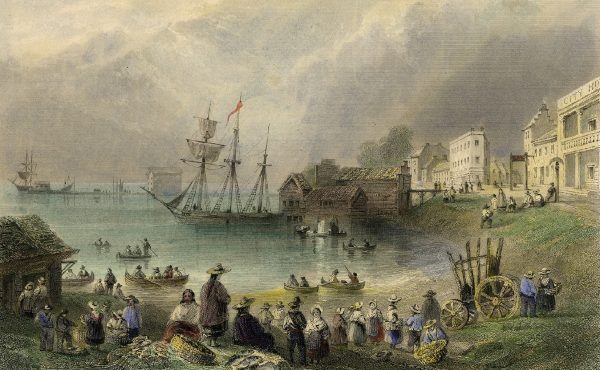This series features highlights from the ongoing exhibit The Fourth Wall: Transforming City Hall. The exhibit, on now at the Urbanspace Gallery, considers possible avenues to break down the barriers to participation in civic life that exist at Toronto’s City Hall.
![]()
Citizens in many cities (including Toronto) choose to engage in the local decision making process through various forms of self-organization. Residents associations and other citizens groups, when organized effectively, can raise the voice of local citizens in the policy development process and contribute to a culture of civic engagement. Toronto has a rich history of citizen organizing, one that could play an even greater role in today’s political climate.
In previous decades, Toronto’s residents associations have provided a structure for citizens to engage at the local level. While some associations remain active today, others have faded into non-existence. One possible reason for this decline could be the lack of support associations receive from the City. There isn’t even an official list or map of existing associations. (David Topping has recently rectified this).
In many American cities, full departments are dedicated to support residents associations and local neighbourhood councils. In Los Angeles, the Department of Neighborhood Empowerment supports the city’s 90 elected Neighborhood Councils. The council system was created in 1999 “to promote more citizen participation in government and make government more responsive to local needs”. In Portland, OR, the Office of Neighborhood Involvement supports 95 Neighborhood Associations as well as 40 Business District Associations. The Office aims to promote a culture of civic engagement and provides program support and funding for initiatives including diversity and civic leadership, engagement strategies, crime prevention and neighbourhood liveability. These cities recognize the value of engaging citizens at the local level and support citizens in their efforts to do so.
In decades past, the City has also benefited from the non-partisan voice of independent research on civic issues. Amidst the political mudslinging and polarised debates that characterize City Council meetings and associated media coverage, it can be challenging to get one’s hands on clear, evidence-based research on the issues of the day. From 1914 to the mid-1980s, the Toronto Bureau of Municipal Research served in this capacity. The Bureau produced reports on a range of local issues including development, transportation, financing and taxes, civics education, the media, growth policy, affordable housing and more. For many decades, the Bureau’s work elevated the discussion by informing citizens and politicians alike.
Do Toronto’s Residents Associations need a stronger voice? Are you a member of your local association? How could the City better support engagement at the neighbourhood level? Would Toronto benefit from the revival of a voice like the Bureau of Municipal Research?
Images from Evan Dean, David Topping and the Department of Neighborhood Empowerment
The Fourth Wall: Transforming City Hall is on at the Urbanspace Gallery (401 Richmond St. W.) until the end of the year. The building is open weekdays, 7am to 7pm, and Saturdays, 9am to 6pm. Curated by Dave Meslin, Research by Hilary Best, Design by Adam Zinzan-Harris.






